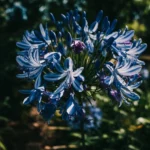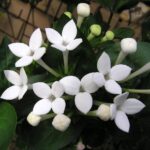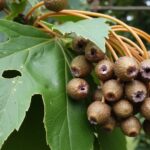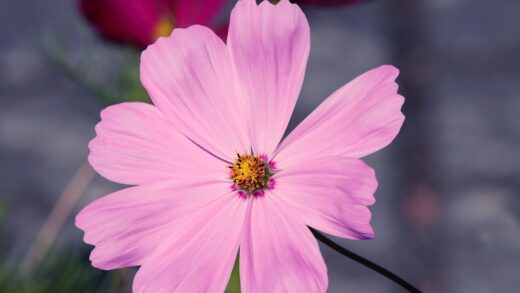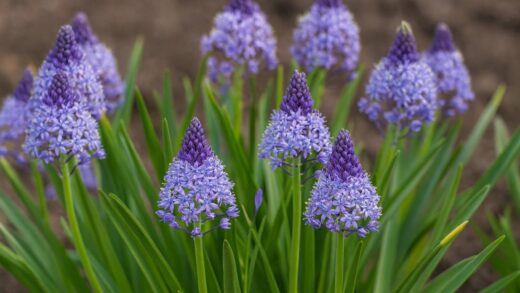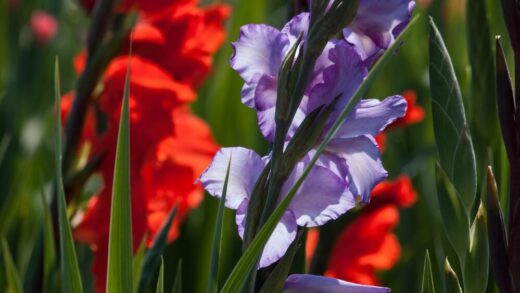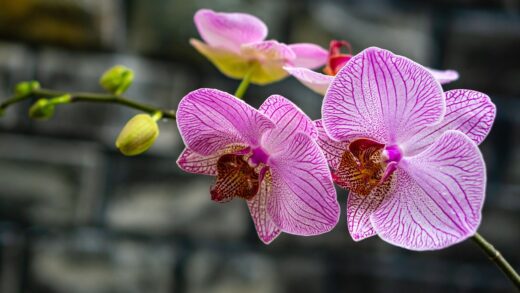The successful establishment of the everlasting pea begins with thoughtful planting and an understanding of its preferred methods of propagation. This hardy perennial vine offers a long-term floral display, and getting its start right is the key to enjoying its vigorous growth and abundant blooms for many years to come. Whether starting from seed or dividing an existing plant, the process is straightforward, rewarding gardeners with a resilient and beautiful climber. Proper site selection, soil preparation, and planting technique are the foundational pillars upon which a healthy and thriving specimen is built, ensuring it becomes a cherished feature in the garden landscape.
Choosing the perfect location is the most critical first step in the planting process. The everlasting pea demands a spot that receives full sun, meaning at least six to eight hours of direct sunlight each day. This exposure is paramount for fueling the energy-intensive process of flower production, and plants situated in shadier conditions will invariably produce fewer, less vibrant blooms and may exhibit leggy growth. Furthermore, the chosen site should ideally offer some shelter from strong, prevailing winds, which can damage the stems and foliage, detracting from the plant’s overall appearance.
Once a sunny location has been identified, attention must turn to the soil. This perennial thrives in well-drained soil that is neutral to slightly alkaline in pH. It is crucial to avoid heavy clay or waterlogged conditions, as this can lead to root rot, a fatal issue for the plant. Before planting, amend the soil by digging in generous amounts of organic matter, such as garden compost, well-rotted manure, or leaf mold. This will improve the soil’s structure, enhancing drainage in heavy soils and boosting moisture retention in sandy soils, creating the ideal root environment.
The optimal time for planting everlasting pea, whether as young plants or seeds sown directly, is in the spring after the danger of the last frost has passed. This timing allows the plant the entire growing season to establish a robust root system before the onset of winter. When planting nursery-grown specimens, dig a hole that is twice as wide and just as deep as the root ball. Gently remove the plant from its container, place it in the hole ensuring the top of the root ball is level with the surrounding soil, and backfill carefully, firming the soil gently around the base.
Immediately after planting, it is essential to water the new plant thoroughly to settle the soil and eliminate any air pockets around the roots. This initial watering is crucial for establishing good root-to-soil contact. For the first few weeks, maintain consistent moisture in the soil to help the plant overcome transplant shock and encourage new root growth. It is also wise to install any planned support structure, such as a trellis or obelisk, at the time of planting to avoid damaging the developing root system later on.
More articles on this topic
Propagation from seed
Propagating the everlasting pea from seed is a cost-effective and rewarding method for generating a large number of plants. The seeds have a very hard outer coat, which can inhibit germination if not properly prepared. To overcome this, a process called scarification is necessary. This can be achieved by gently nicking the seed coat with a sharp knife or by rubbing it with sandpaper, being careful not to damage the inner part of the seed. This small abrasion allows water to penetrate the seed and initiate the germination process.
After scarifying the seeds, it is highly beneficial to soak them in lukewarm water for 12 to 24 hours. This pre-soaking step further softens the seed coat and significantly speeds up the germination time. You will notice the seeds swell in size as they absorb water, which is a good indication that they are ready for sowing. Discard any seeds that float after the soaking period, as they are likely not viable. This preparation ensures a much higher and more uniform rate of germination.
Seeds can be sown indoors six to eight weeks before the last expected frost date to get a head start on the season. Sow the prepared seeds about an inch deep in individual pots or seed trays filled with a quality seed-starting mix. Place the pots in a warm, bright location, such as a sunny windowsill or under grow lights, and keep the soil consistently moist but not saturated. Germination typically occurs within 10 to 21 days under these optimal conditions.
Alternatively, seeds can be sown directly into the garden in the spring once the soil has warmed up and all risk of frost has passed. Prepare the planting site as previously described, ensuring the soil is loose and friable. Sow the scarified and soaked seeds about an inch deep and six inches apart at the base of their intended support structure. Water the area well after sowing and maintain moisture until the seedlings emerge. Once the seedlings are a few inches tall, they can be thinned to their final desired spacing, typically 12 to 18 inches apart.
More articles on this topic
Propagation by division
Division is an excellent method for propagating mature, established everlasting pea plants, and it also serves to rejuvenate older, overcrowded clumps. This process involves carefully lifting the entire plant and separating it into smaller sections, each with its own set of roots and shoots. The best time to divide everlasting peas is in the early spring, just as new growth is beginning to emerge from the ground. This timing allows the newly created divisions to establish themselves quickly with the onset of the growing season.
To begin the process, use a sturdy garden fork or spade to carefully dig around the perimeter of the plant clump, giving it a wide berth to avoid damaging the extensive root system. Gently work the tool underneath the root ball and lift the entire plant from the ground. Once lifted, shake or gently wash off the excess soil to get a clear view of the root structure and the crown, which is the point where the stems meet the roots. This will make it easier to identify the best places to make the divisions.
Using a sharp, clean spade, a large knife, or even two garden forks placed back-to-back, divide the clump into several smaller sections. Ensure that each new section has a healthy portion of the root system and at least a few visible growth buds or young shoots. The size of the divisions can vary, but a section with three to five strong shoots is ideal for creating a new, viable plant. Discard any old, woody, or unproductive parts from the center of the original clump.
Immediately after dividing, it is crucial to replant the new sections to prevent their roots from drying out. Plant them at the same depth they were previously growing, in a prepared site with well-drained soil and adequate sun exposure. Water the divisions thoroughly after planting to settle the soil and provide the necessary moisture for new root development. The newly divided plants may take some time to recover and may not flower as prolifically in their first year, but they will establish themselves and return to their full glory in subsequent seasons.
Taking cuttings
While less common than seed propagation or division, it is also possible to propagate everlasting peas from stem cuttings. This method is best performed in late spring or early summer when the plant is in a state of active growth. Select healthy, non-flowering shoots for the cuttings, as these will root more readily than stems that are producing flowers. The ideal cutting should be about four to six inches long and taken from the new, vigorous growth of the current season.
Using a sharp, sterile knife or pruning shears, take the cuttings by making a clean cut just below a leaf node, which is the point on the stem where a leaf emerges. Carefully remove the leaves from the lower half of the cutting to prevent them from rotting when placed in the rooting medium. To enhance the chances of successful rooting, you can dip the cut end of the stem into a rooting hormone powder, tapping off any excess before planting.
Prepare a pot or tray with a well-draining rooting medium, such as a mix of perlite and compost or a specialized cutting compost. Insert the prepared cuttings into the medium, ensuring that the lower leaf nodes are buried. Water the medium gently and cover the pot with a clear plastic bag or place it in a propagator to create a humid environment, which is crucial for preventing the cuttings from drying out while they develop roots.
Place the cuttings in a warm location with bright, indirect light, avoiding direct sunlight which can scorch the delicate leaves. Check the cuttings regularly, ensuring the medium remains consistently moist but not waterlogged. Rooting can take several weeks, and you can test for root development by giving the cutting a very gentle tug; if you feel resistance, roots have likely formed. Once the cuttings have developed a healthy root system, they can be gradually acclimatized to normal conditions and then transplanted into individual pots or their final garden position.
Managing new plants
Caring for newly planted or propagated everlasting peas is crucial for their long-term success. For the first few weeks after planting, whether from seed, division, or cuttings, the primary focus should be on providing consistent moisture. The soil should be kept evenly moist to encourage the development of a strong and deep root system, which is the foundation for a healthy plant. This is especially important during dry or windy weather, which can quickly dry out the soil and stress the young plants.
Young everlasting pea seedlings and newly rooted cuttings are particularly vulnerable to pests, especially slugs and snails, which are attracted to the tender new growth. Implement protective measures to guard against these pests. This can include using organic slug pellets, creating a barrier of crushed eggshells or diatomaceous earth around the base of the plants, or manually removing slugs during their active evening hours. Protecting the plants during this fragile stage is vital for their survival and establishment.
As the young plants begin to grow, it is important to provide support early on. Guide the emerging vines towards the trellis or other support structure you have installed. You may need to loosely tie the first few stems to the support with soft twine to help them attach. This early training prevents the plant from sprawling on the ground, where it would be more susceptible to pests and diseases, and ensures it develops a strong, upright habit from the beginning.
For plants grown from seed or cuttings, it is advisable to pinch out the growing tips once they have reached a height of about six inches. This simple action, which involves removing the very top of the main stem, encourages the plant to produce side shoots from the base. This results in a much bushier, fuller plant with more stems, which will ultimately lead to a more prolific display of flowers in the future. This one-time pinch is a simple step that pays significant dividends in the plant’s overall form and floral capacity.








